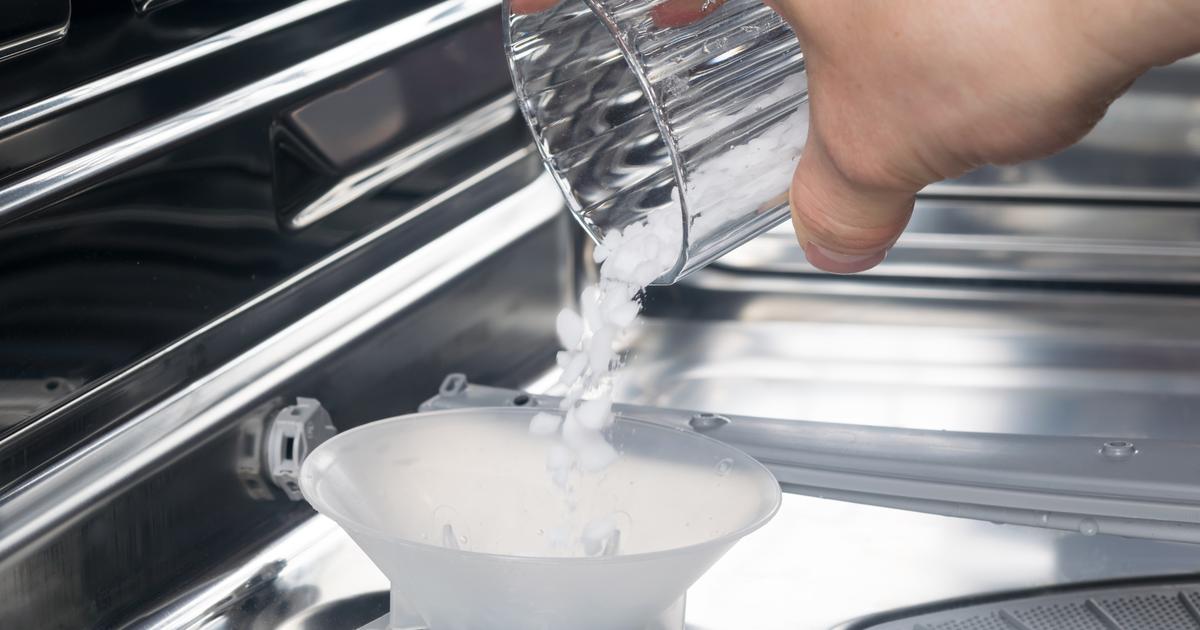So that your dishes come out of the dishwasher clean and shiny, several products are necessary: cleaning detergent to wash the dishes properly (tablets, tablets, powder), rinsing liquid to speed up drying and regenerating salt to fight against limescale and tartar.
What exactly is salt for and how to use it in your dishwasher?
To discover
February: what vegetables and fruits are in season?
What is salt used for in the dishwasher?
Hard water can cause deposits on dishes and damage the appliance.
Dishwasher salt, large ecological salt crystals composed of sodium chloride, ensures impeccable results when washing, because it:
Acts as an effective water softener by neutralizing calcium and magnesium ions found in hard water.
Prevents the formation of limescale deposits on dishes and dishwasher walls, thus extending the life of the appliance.
Allows detergent to work more effectively and remove food residue and stubborn stains.
Helps maintain the energy efficiency of the dishwasher, thereby reducing electricity consumption.
If your tap water is soft, then there is no need to use salt in your dishwasher.
On the other hand, if traces of limescale appear or in regions of France where the water is highly limestone and loaded with calcium and magnesium ions, the regenerating salt for dishwashers helps maintain the performance of the appliance.
To find out the hardness of the water, you can do a simple test with a pH measuring strip or contact your water supplier for more details.
To know
Dishwasher salt is not a polluting product.
Its use is without risk for your machine and the environment.
How to use salt in a dishwasher?
To use salt in your dishwasher:
Locate the salt reservoir: it is generally located below the bottom basket of your device.
You can easily identify it thanks to the universal symbol of two arrows forming an S on the fuel cap.
Unscrew the tank cap and check that the tank already contains some water.
If not, add some.
Pour a dose of salt using a funnel until the tank is completely filled.
Be sure to use special softener salts designed for dishwashers, as table salt does not have the same function and has grains that are too fine.
Screw the cap back firmly.
Clean off any excess salt from around the cap.
Replace the lower basket.
If you do not start the wash program immediately after adding salt, run the machine empty with the shortest program to dissolve and wash away the salt scattered in the machine.
When to put regenerating salt in the dishwasher?
Regularly adding regenerating salt to your dishwashing machine guarantees optimal washing performance and prevents the formation of scale and white marks on your glasses and plates.
If your dishwasher is equipped with an indicator light dedicated to the salt reserve, it will alert you when the level becomes insufficient.
In case your model does not have this function, it is recommended to regularly check the salt level in your water softener or add salt if necessary using the dedicated funnel at
least once a year. month
.
Of course, how often you add salt depends on the number of wash cycles performed and the hardness of the water in your area.
How much salt is in the dishwasher?
The quantity of salt to put in the tank depends on the model of the device and the hardness of the water.
Most dishwashers are equipped with an indicator on the tank to facilitate this determination, emphasizing the importance of respecting the recommended level in order to avoid any risk of overdose or overflow which could damage the appliance.
To ensure optimal performance, pour between 1 and 2 kg of softening salt into the tank, checking the maximum capacity indicated in the instructions for your dishwasher.
Use only special softener salts designed for dishwashers, thus ensuring proper use and preserving the quality of the appliance.
In the absence of the user manual, it is generally recommended to fill the regenerating salt tank until it is almost full, without completely filling it.
When pouring the salt, be careful not to spill it on the metal parts to avoid any risk of corrosion.
Regenerating salt is an anti-limescale agent which contributes to the softening of hard water or very hard water.
It preserves the cleanliness and shine of your dishes.
By following these steps, you will ensure that your dishwasher uses the regenerating salt efficiently.

